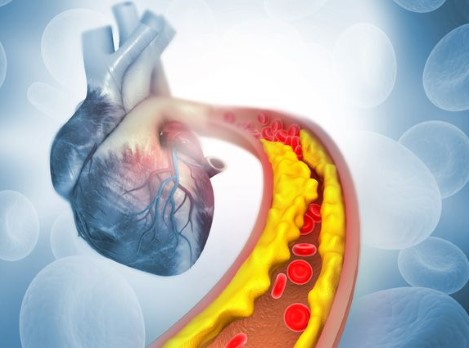When can we suspect deep vein thrombosis?
Post updated: July 18
COVID-19 is a systemic, potentially severe and life-threatening disease provoked by SARS-CoV-2 infection, including both immune and inflammatory reactions, endothelial cell dysfunction, complement activation and hypercoagulation.
One of the most severe complications after COVID-19 is vascular damage and the formation of blood clots.
Deep vein thrombosis (DVT) is a disease in which blood clots (blood clots) form in the lumen of deep veins.
Today we will talk about DVT with Kristina Nikolaevna Kukharchuk, an experienced doctor of functional diagnostics of the consultative and diagnostic department of the V. P. Komissarenko Institute of Endocrinology and Metabolism of the NAMS of Ukraine, Candidate of Medical Sciences, who over the past 3 years has performed more than 650 Doppler scans of arteries and veins of the lower extremities.
Deep vein thrombosis (DVT) is included in the concept of venous thromboembolism (VTE) along with thrombosis of the superficial veins of the lower extremities and pulmonary embolism (PE).
The difficulty of diagnosing DVT is that half of the cases develop without clinical symptoms, and if there are symptoms, they may be nonspecific.
Forms of DVT of the lower extremities
blue pain phlegmasia is the most severe form, with a high risk of limb loss or death; occlusion of almost all veins of the limb → significant increase in venous pressure, violation of blood flow to the crowded bed → tissue hypoxia.
When can I suspect DVT and see a doctor?
The most common complaints with DVT:
One of the most severe complications after COVID-19 is vascular damage and the formation of blood clots.
Deep vein thrombosis (DVT) is a disease in which blood clots (blood clots) form in the lumen of deep veins.
Today we will talk about DVT with Kristina Nikolaevna Kukharchuk, an experienced doctor of functional diagnostics of the consultative and diagnostic department of the V. P. Komissarenko Institute of Endocrinology and Metabolism of the NAMS of Ukraine, Candidate of Medical Sciences, who over the past 3 years has performed more than 650 Doppler scans of arteries and veins of the lower extremities.
Deep vein thrombosis (DVT) is included in the concept of venous thromboembolism (VTE) along with thrombosis of the superficial veins of the lower extremities and pulmonary embolism (PE).
The difficulty of diagnosing DVT is that half of the cases develop without clinical symptoms, and if there are symptoms, they may be nonspecific.
Forms of DVT of the lower extremities
- distal – occurs most often; affects the anterior and posterior tibial and fibular veins; mostly asymptomatic and passes spontaneously, associated with a low risk of clinically significant PE, but may spread to the proximal form of DVT;
- proximal — the popliteal vein, femoral, iliac veins and inferior vena cava are affected; usually with clinical manifestations, creates a high threat to the massive body, sometimes taking into account the need for special tactics of actions, an ileo-femoral form is isolated (in which the popliteal vein is not affected);
- pain phlegmasia is an acute form of venous thrombosis of most veins through which blood flows from the limb, with pain syndrome and massive edema:
blue pain phlegmasia is the most severe form, with a high risk of limb loss or death; occlusion of almost all veins of the limb → significant increase in venous pressure, violation of blood flow to the crowded bed → tissue hypoxia.
When can I suspect DVT and see a doctor?
The most common complaints with DVT:
- swelling of the lower leg or the entire limb, sometimes creates the impression of a thickening of the limb;
- increased palpatory sensitivity or soreness during compression, sometimes with pain of the limb at rest;
- unpleasant sensations in the limb (symptoms may be absent or slightly expressed);
- an increase in the temperature of the skin of the limb;
- expansion of superficial veins, persisting despite the lifting of the limb at an angle of 45 °;
- subfebrility, sometimes fever (as a result of inflammation around a vein that has a blood clot).



